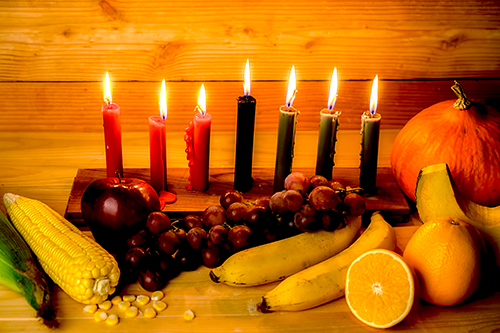The holidays are full of our festive favorites like pies and holiday drinks. Sometimes healthful options, like fruits and vegetables, aren’t as available during the holidays. If you’re looking for ways to make your holiday more healthful, try these tips.
1. Enjoy your holiday favorites
Give yourself permission to eat your holiday favorites. These winter celebrations only come once a year. If you’re eating multiple holiday meals this season, practice moderation and balance your diet with healthful options. Remember to eat mindfully and listen to your hunger cues.
2. Stay active
Move your body in a way that feels good this holiday season. Like walking? Enjoy yoga? A fan of running? Stay active in ways that you enjoy. If you enjoy what you’re doing, you’re more likely to keep it up! Check out our blogs on how to stay active during wintertime and indoor exercise ideas for more tips.

3. Include vegetable dishes
There are so many delicious vegetable dishes for the holidays! Consider including one or more of these dishes on your holiday table.
- Collard greens
- Okra
- Mashed potatoes
- Stir fry cabbage
- Roasted carrots
- Sweet potatoes
- Candied yams
- Green beans or green bean casserole
- Roasted broccoli
- Roasted brussels sprouts
- Roasted beets
- Roasted butternut squash
- A fresh salad
If you want, you can always make these dishes even more nutritious by reducing the amount of saturated fat (think: butter), salt, and sugar that you cook with. Check out any of Food Talk’s recipes for meal ideas with limited saturated fat, salt, and added sugar.

4. Eat fruits and vegetables throughout the day
If you know you’re not going to have a lot of fruits or vegetables at dinner, try to incorporate them into meals or snacks before or after the celebrations. This balanced approach to the holidays will make sure that you’re still eating plenty of fruits and vegetables!
5. Eat mindfully
Being “mindful” just means focusing on the present moment.
Have you ever eaten something while talking to someone or watching TV? You may have ignored your food as you were eating it. Mindfully eating means that you are aware of your mealtime experience in the present moment. Paying attention to things like the smell, taste, and texture of your food can help you enjoy and savor what you’re eating. You may find yourself more satisfied with your food.
Mindful eating can also mean that you’re aware of how your body is feeling when you eat. Pay attention to when you’re getting full and eat more, less, or the same amount based on your hunger cues (signs you are hungry or getting full!).
Penn Medicine suggests the following strategies for listening to your hunger signs [1]:
- Pausing and asking yourself if you’re hungry
- Doing a head-to-toe body “scan” to evaluate how your body is feeling
- Eating more slowly and allowing your body time to let you know when it’s full
By shifting your attention to your hunger signs, mindful eating has been found to reduce eating for reasons that are not based on your hunger signs (for example, eating because everyone else around you is eating). [2]
Slow down your meal for a mindful experience by playing this question game with your family this holiday season.
6. Remember that the holidays are temporary
Remove guilt by recognizing that holiday meals only occur during a brief period out of the year. Your overall diet is more important than a handful of meals. Incorporate lean proteins, fruits and vegetables, and whole grains into your diet year-round.
Happy holidays, everyone!
Written by Taylor Newman, Ph.D. Candidate | Edited by Leslie Davis, RDN, LD, CDCES, and the Nutrition Team



